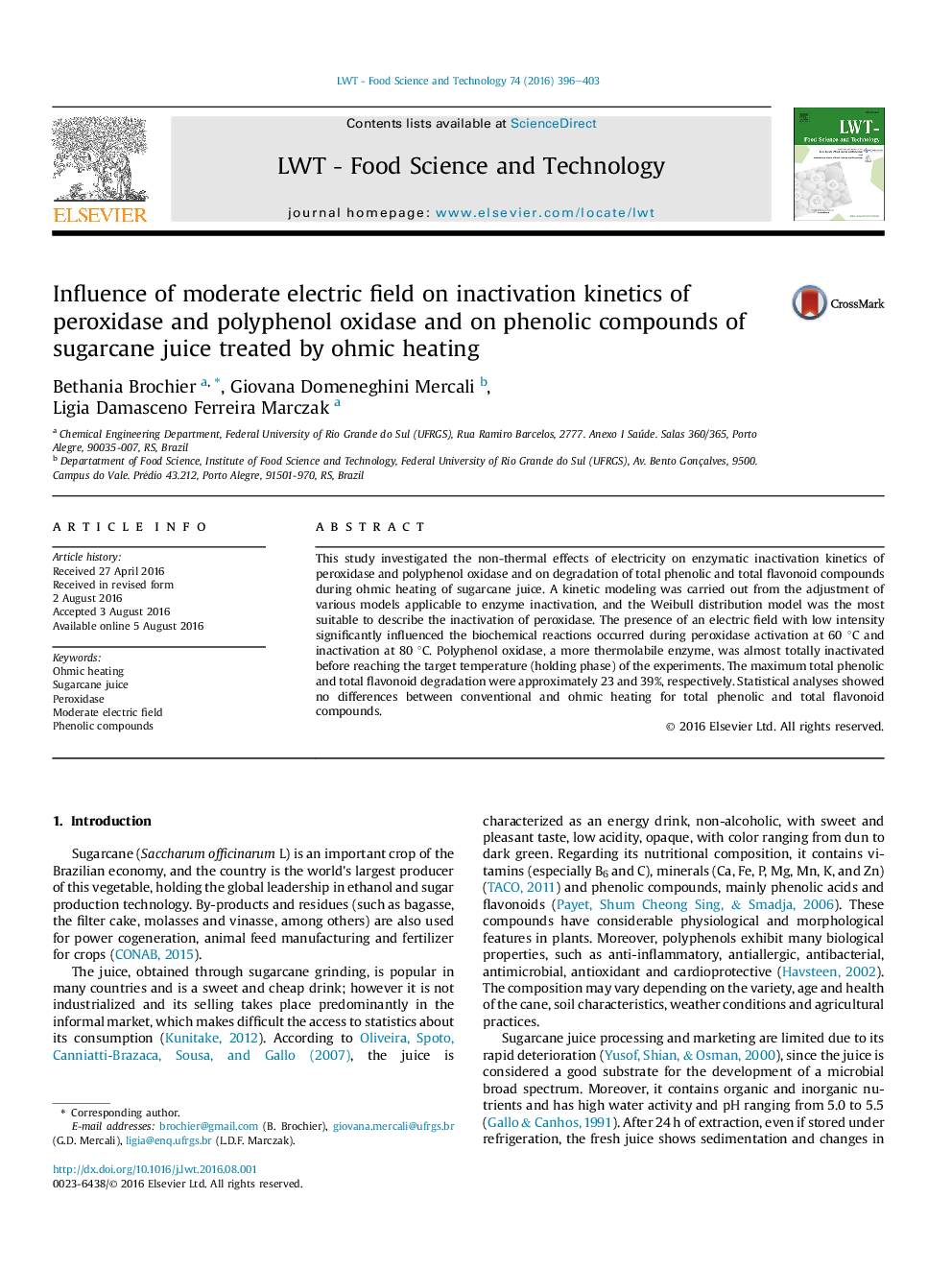| Article ID | Journal | Published Year | Pages | File Type |
|---|---|---|---|---|
| 4563475 | LWT - Food Science and Technology | 2016 | 8 Pages |
•Sugarcane juice was treated by conventional and ohmic heating.•Weibull distribution model best fitted peroxidase inactivation.•There were differences between treatments on peroxidase inactivation kinetics.•Phenolic degradation was similar for all conditions evaluated.
This study investigated the non-thermal effects of electricity on enzymatic inactivation kinetics of peroxidase and polyphenol oxidase and on degradation of total phenolic and total flavonoid compounds during ohmic heating of sugarcane juice. A kinetic modeling was carried out from the adjustment of various models applicable to enzyme inactivation, and the Weibull distribution model was the most suitable to describe the inactivation of peroxidase. The presence of an electric field with low intensity significantly influenced the biochemical reactions occurred during peroxidase activation at 60 °C and inactivation at 80 °C. Polyphenol oxidase, a more thermolabile enzyme, was almost totally inactivated before reaching the target temperature (holding phase) of the experiments. The maximum total phenolic and total flavonoid degradation were approximately 23 and 39%, respectively. Statistical analyses showed no differences between conventional and ohmic heating for total phenolic and total flavonoid compounds.
